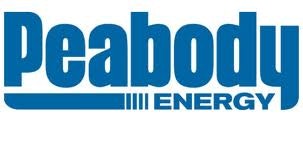Coal is predominantly used in the production of electricity and in the steel making process. The outlook for both of these end markets is different today. Although a diversified company like Peabody Energy Corporation (NYSE:BTU) provides exposure to both, more intrepid investors might prefer the finer focus that Cloud Peak Energy Inc. (NYSE:CLD) and Walter Energy, Inc. (NYSE:WLT) provide.
In the Clouds
Cloud Peak Energy Inc. (NYSE:CLD) is based almost exclusively out of the Powder River Basin (PRB). This area produces coal used for electricity that international coal giant Peabody Energy Corporation (NYSE:BTU) believes is competitive with natural gas priced at around the $2.50 to $2.75 per mmBtu range. That’s about as cheap as it gets in the United States and is why Peabody generates about 37% of revenues from its Western U.S. division, which includes the PRB.

That trend will lead to weak results for Cloud Peak Energy Inc. (NYSE:CLD) in 2013 despite its cheap and currently competitive coal. For example, management is forecasting flat to slightly lower tons sold in the U.S. market in 2013. Add in weak coal prices and the year looks pretty grim. To management’s credit, however, the company has remained profitable despite the deep market trough.
But once utilities start to pick up their purchases to replenish coal reserves, Cloud Peak Energy Inc. (NYSE:CLD)’s cheap coal will again be in demand. Looking forward, management is “optimistic that the steady coal burn and continued reduction in PRB inventories will lead to prices moving higher later in the year.”
American Electric Power Company, Inc. (NYSE:AEP), for example, reduced its use of natural gas by 37% through the first six months of the year, but increased its use of coal by about 4%. And, within Duke Energy Corp (NYSE:DUK)’s Commercial Power segment, electricity generated by coal increased 26% while natural gas fired power fell by about the same amount. These types of shifts should set 2014 up to be a good year for Cloud Peak Energy Inc. (NYSE:CLD) and its thermal coal focus.
Of course Peabody Energy Corporation (NYSE:BTU) will benefit from that trend, too, but Cloud Peak Energy Inc. (NYSE:CLD)’s tighter end-market focus suggests that a U.S. coal recovery will have a more pronounced impact on the bottom line.
Steeling for a long fight
Walter Energy, Inc. (NYSE:WLT) is focused on metallurgical coal, which is used in the steel making process. The company has mines in the United States, Canada and the United Kingdom. Unlike U.S. coal used for electricity which is driven more by domestic demand, met coal is heavily influenced by global supply and demand trends. Thus, Walter must compete with met coal producers from all over the world and in global end markets.
That’s been a headwind of late. For example, the entire met coal industry has been focused on reducing costs and improving efficiency. While Walter Energy, Inc. (NYSE:WLT) was able to bring costs down to about $78.50 per ton in the second quarter from $102 per ton a year ago, those savings came along with a nearly 15% drop in tons sold and an over 20% drop in the price per ton.
Part of the problem is that Walter Energy, Inc. (NYSE:WLT) has to compete with global players like Peabody Energy Corporation (NYSE:BTU), which generates nearly 30% of its revenues from its Australian met coal operations. That area of Peabody is benefiting from a falling Australian dollar and its closer proximity to key Asian markets. Unlike Walter, Peabody sold more met coal in the first half than it did in the same period last year.
Walter Energy, Inc. (NYSE:WLT) lost money in the first half and is unlikely to turn a profit in 2013. However, it is continuing to invest in its business and was able to increase its production nearly 10% in the second quarter compared to 2012. Right now, that’s just wasted capacity, but as the supply and demand of met coal balance out, it positions the company to prosper down the road.
Note that steel is a necessary component in the build out of the world’s infrastructure. BHP Billiton Limited (ADR) (NYSE:BHP) is expecting the percentage of the world’s population living in cities to increase from about 52% in 2010 to 60% by 2030. That’s going to be driven by continued growth in China and India, where consumers are quickly moving up the economic ladder.





